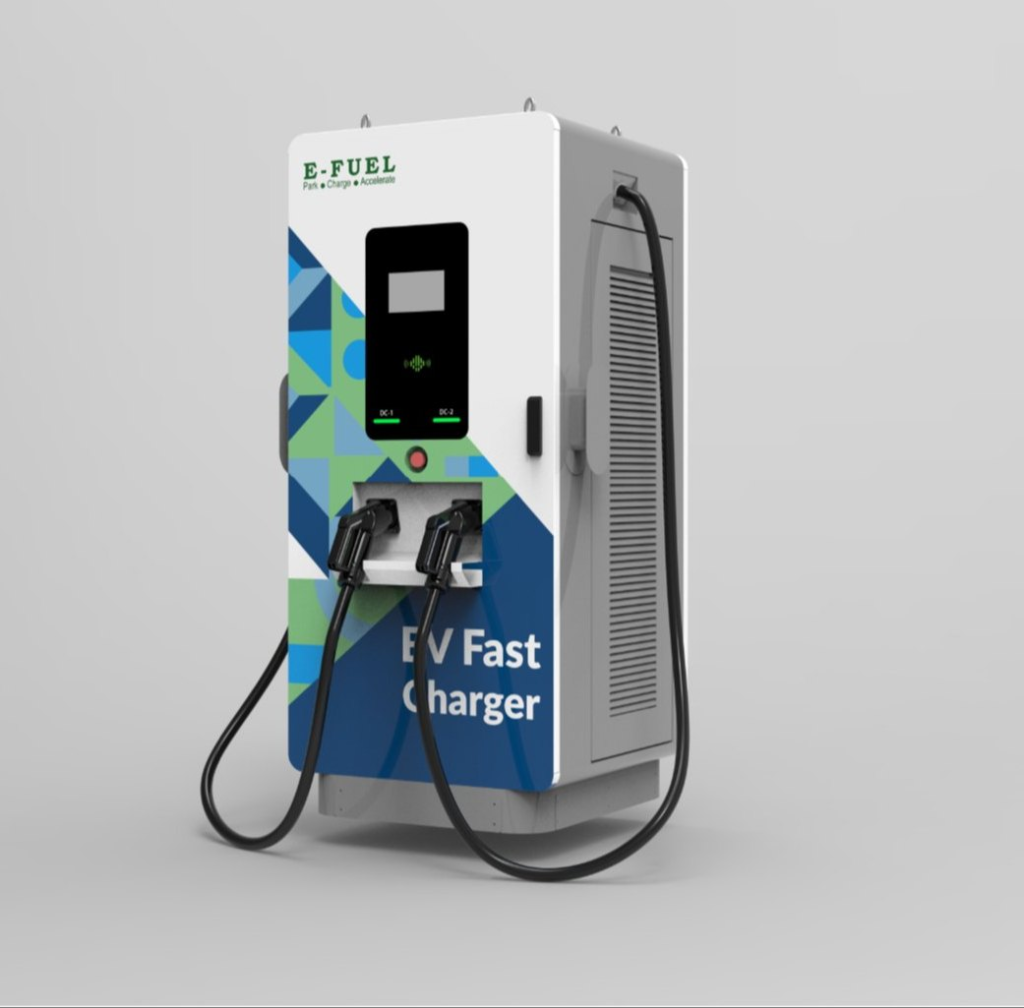The automotive industry is trying to develop a more sustainable future. That is why electric cars have gained their traction in this sector. Even commercial fleet owners want to rely on electric vehicles for their business purposes. However, EV owners still face some challenges due to the lack of robust charging infrastructures. Nevertheless, DC fast-charging solutions have solved the problems of many EV drivers. DC chargers for EVs provide unparalleled convenience and benefits. Let us talk more about these charging systems for electric cars.

Know about AC and DC chargers for electric cars
Electrical current is available in 2 versions- Direct and Alternating currents. For Alternating Currents, the electricity passes through power grids to reach commercial buildings and homes. So, some EV chargers receive electricity through AC current. The DC-type current remains preserved in batteries. DC provides a faster charging solution, whereas AC slows charging.
The power level is the biggest factor differentiating DC and AC charging for electric vehicles. The AC chargers for these cars work at a comparatively low power level (7-22kW). In case of DC EV charging stations, the power level is more than 50kW.
If you want slow overnight charging, you can choose the AC EV chargers. But, DC is the right choice for highway charging. You can find both these charging solutions in different places across your city. Depending on the preferred power level, you can choose between DC and AC chargers. Although AC charging is a slower process, you will have a cheaper solution.
DC fast chargers for EV- How do they work?
While using Level 1 and 2 charging stations, they AC current from the power grid. The DC is essential for allowing the battery to store chemical energy. The Alternating Current should work with a converter. The EV has a charging system with an AC/DC converter. You can check the wattage or power of the converter, as it indicates the rate of converting Alternating to Direct current.
For instance, some Tesla models come with 11.5 kW converters, and they can manage a current of a maximum of 48 amps. In case of DC faster charging stations, the converter is available at the charge point. They are a more powerful and larger solution.
The fast chargers for electric vehicles range from 15 to 300 kW. With the technological development, they will become more advanced. For example, Tesla’s Superchargers are a new-generation solution with a significant power capacity of around 250 kW.
However, if you have chosen the fast charger, you may find some limitations with your EV. Every EV model has a unique acceptance rate. For instance, if the highest acceptance rate of your EV is 50 kW, the charge will be at the same power and speed as any DC fast charger.
The acceptance rate will keep your EV’s battery safe. The rate is low for the older electric cars. After you have plugged in the system, the charging power reaches the maximum level. When the charge level hits 80%, there is a significant drop in power to safeguard Li-ion batteries.
How is a level 2 charger different from a DC faster charger?
Level 3 DC fast chargers help you charge your EV quicker. On the contrary, Level 2 charging stations are normal AC models. They are like wall chargers installed at home. You can look for special connectors used for Level 2 AC and DC charging stations.
For instance, you might have an innovative electric car with a good acceptance rate, and it depends on high-power chargers. So, you can use a Level 3 charger to charge the vehicle from 0 to 80% within 30 minutes.
A few tips for DC fast charging your EV
If you want to install a DC fast charger, you must know some tips-
Choose the connector type- Type 2 connectors are used for charging your EVs with AC chargers. However, for DC fast charging solutions, you need a different connector type. More electric vehicles are integrated with DC fast chargers. However, ensure you have checked the vehicle’s port before plugging in the system. The best quality DC chargers charge almost any EV model.
Know about the 80% rule- There is a charging curve for EV batteries. Initially, you will find slow charging depending on the weather conditions. Over time, the charging speed will go up and again slow down when the EV battery charge is 80%.
While using a DC charger, you have to unplug once the battery charge has reached 80%.
Why should your commercial EVs use DC chargers?
If your commercial fleet has electric vehicles, the DC charging station is advantageous.
- Good uptime- As DC chargers allow rapid charging, it will reduce downtime. Your EV fleet will always be active, and the vehicles do not need to wait a long time for a full charge.
- Higher flexibility and range– With a DC fast charger, you can make flexible route planning. Long-distance deliveries will be easier.
- Better operational efficiency– Faster charging also allows you to optimize your fleet usage. You can run a minimal number of commercial vehicles to maintain the same service level.
- Provide the best customer experience– If your business provides EV charging services, DC fast chargers will be the right choice. It will minimize the wait times of your customers.
Before installing DC fast-charging stations for commercial purposes, you must not overlook the power output. Understand your fleet requirements before taking a step. Your EV fleet should be compatible with the DC fast charging stations. Moreover, you have to choose the charging connectors carefully.
Conclusion
DC chargers for EVs have become the best solution for charging purposes. You may integrate the DC fast charging infrastructures with your renewable energy sources. The charging technology will improve the operational efficiency of your commercial EV fleet. Upgrade your charging infrastructure to install DC faster-performing chargers.



